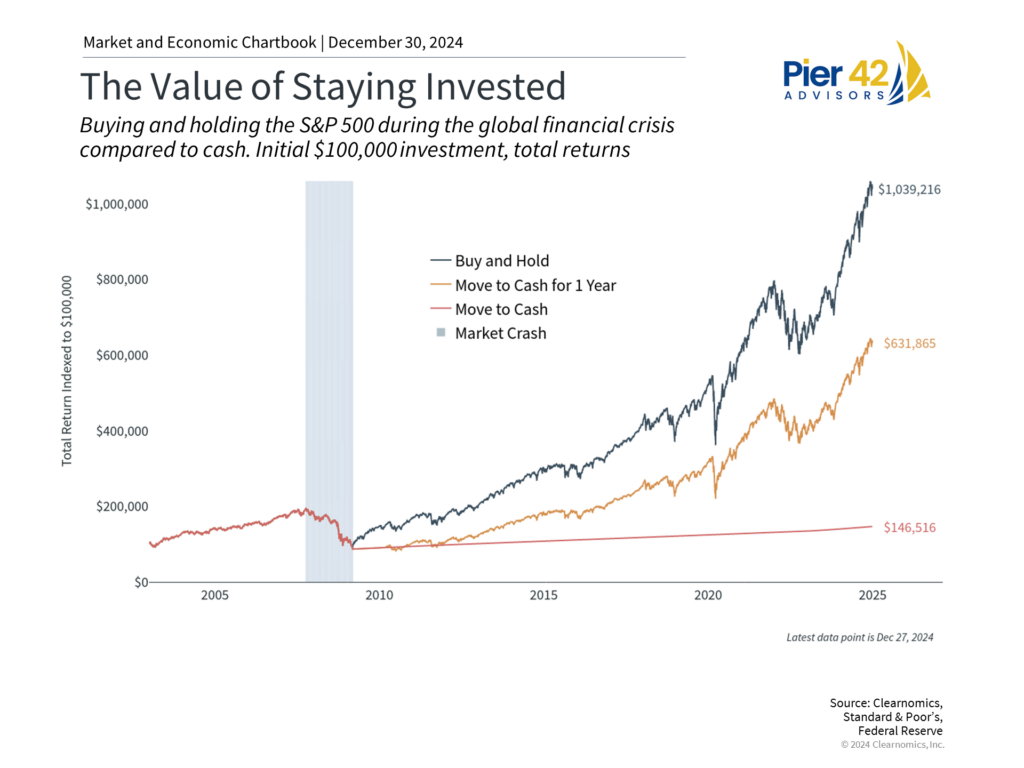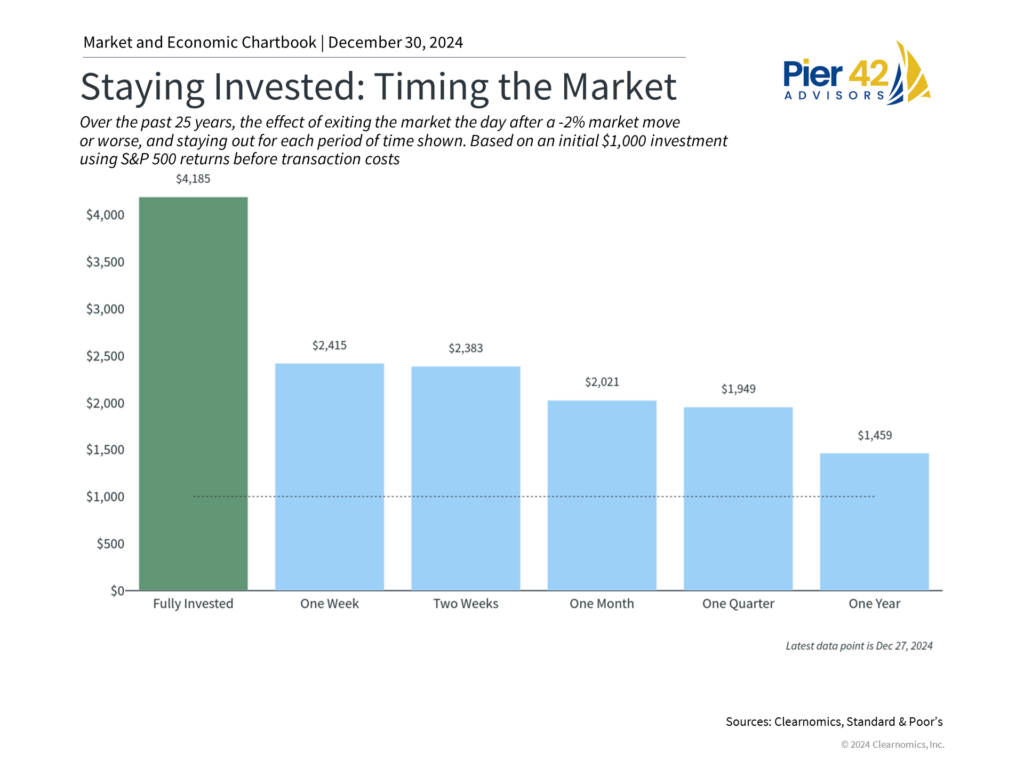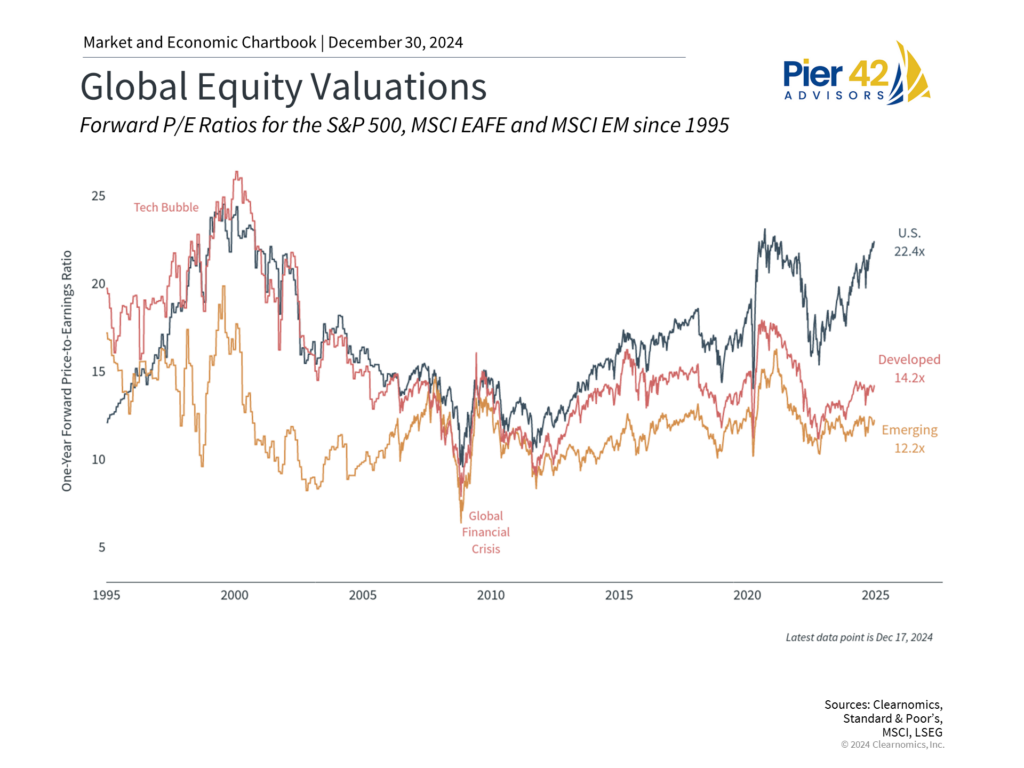2025 Investment Guide: 5 Key Points for a Balanced Portfolio
As we reflect on 2024, many investor worries about recession, market drops, and election chaos didn’t come true. Instead, stocks reached new highs, prices stabilized, and the economy kept growing. This shows how too much worry can lead to poor investment choices.
Looking ahead to 2025, the focus should be on finding balance in your investments. While the stock market is doing well now, prices are high, interest rates are changing, and global risks remain. Here are five important lessons to help guide your investment decisions.
1. A healthy economy has helped all types of investments grow
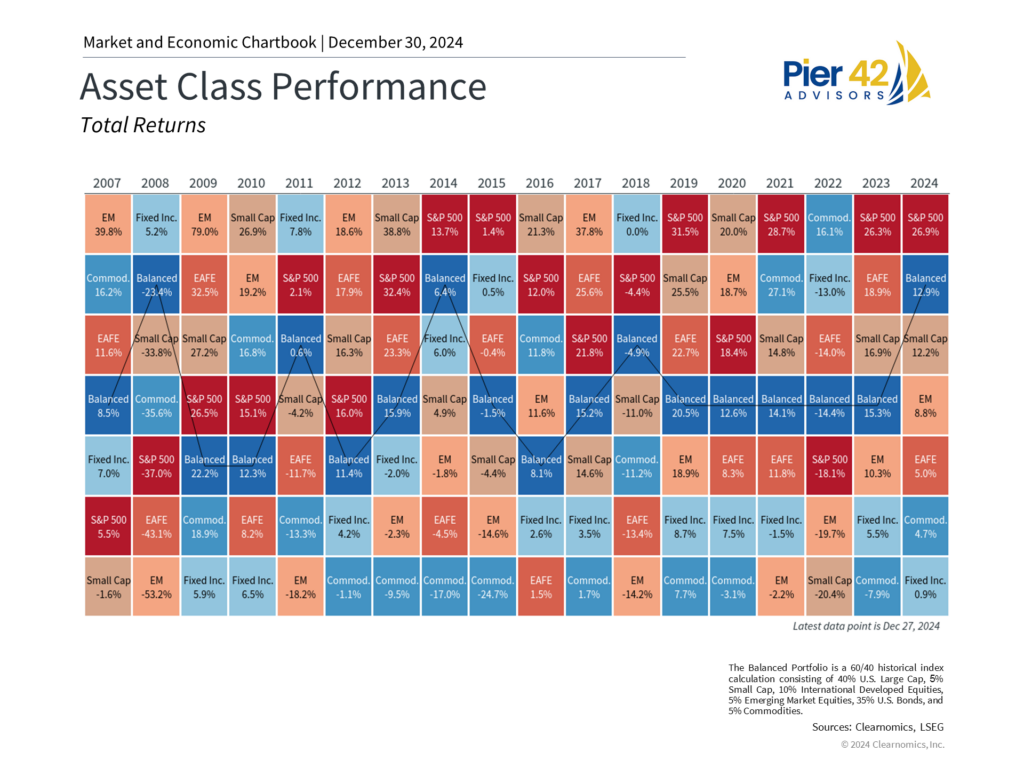
The economy has performed better than expected. Price increases have slowed down, jobs are plentiful, and the economy is growing steadily. This has helped push up the value of stocks, international investments, bonds, and precious metals.
While this is good news, challenges remain. People might spend less as they use up their savings, and both individuals and companies have high levels of debt. It’s important to look at company earnings and prices when making investment decisions.
2. High stock prices mean diversification is crucial
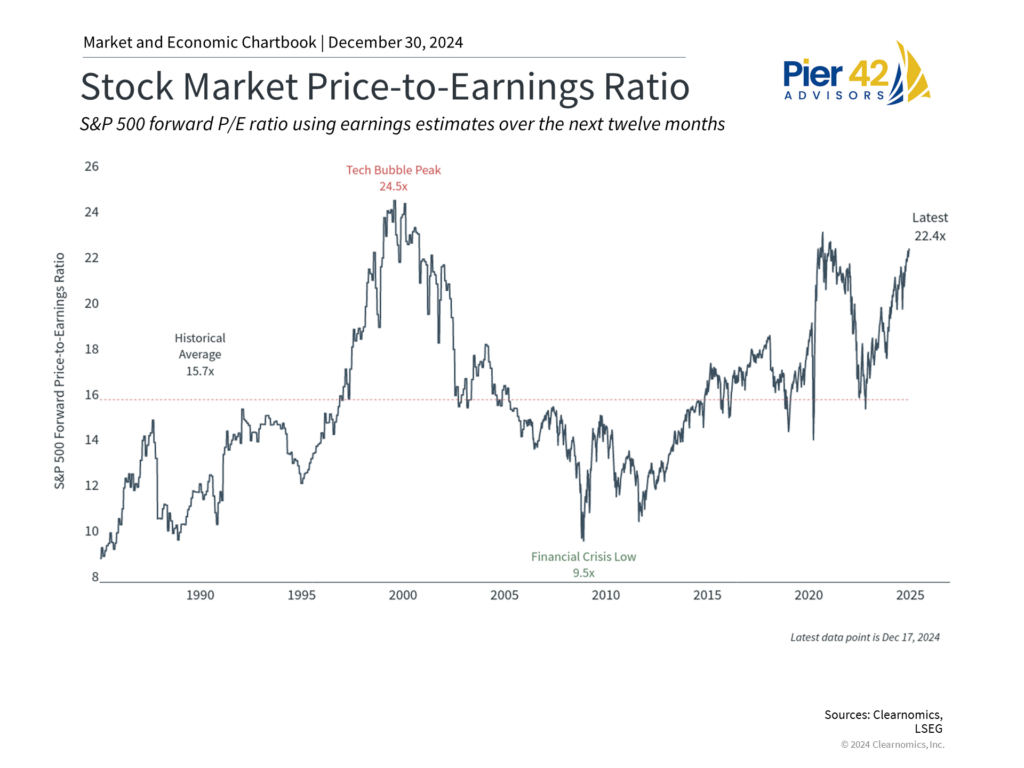
Company profits are growing, which is good for stocks. However, stock prices have grown even faster than profits, making them expensive by historical standards. This means it’s important to spread your money across different types of investments, including bonds and international stocks.
3. Interest rates are expected to decrease
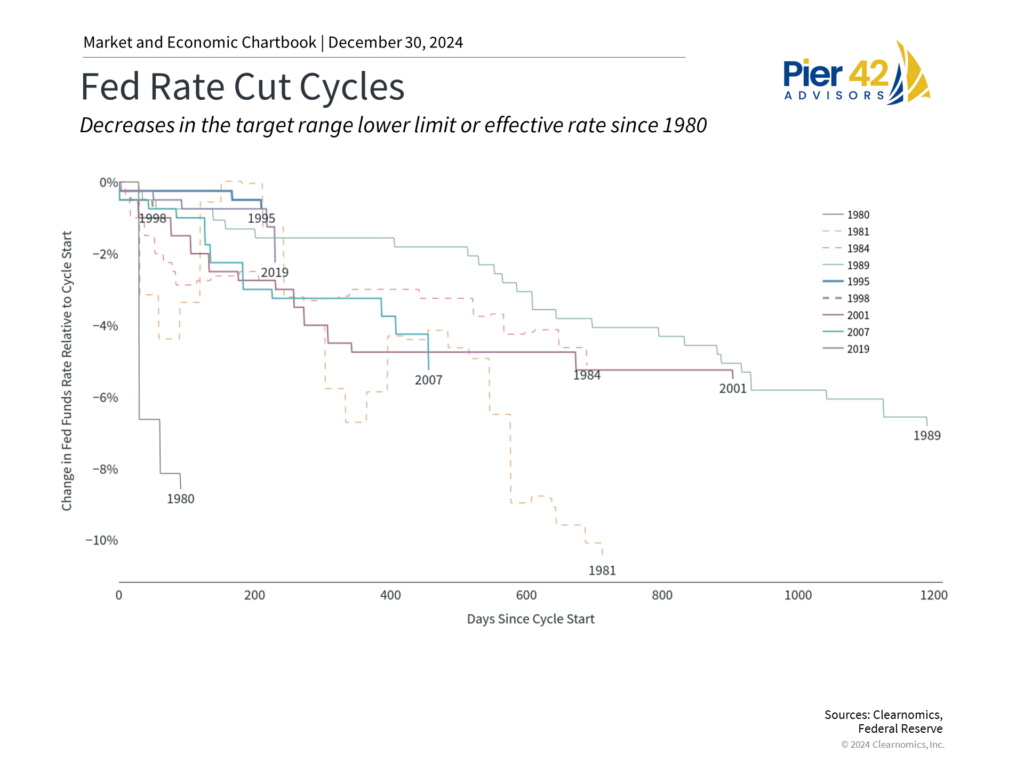
The Federal Reserve has started lowering interest rates, with more cuts expected. Lower rates can help both the economy and investments grow. This could be good news for bonds, which may offer both steady income and potential growth.
4. Focus on long-term growth, not politics
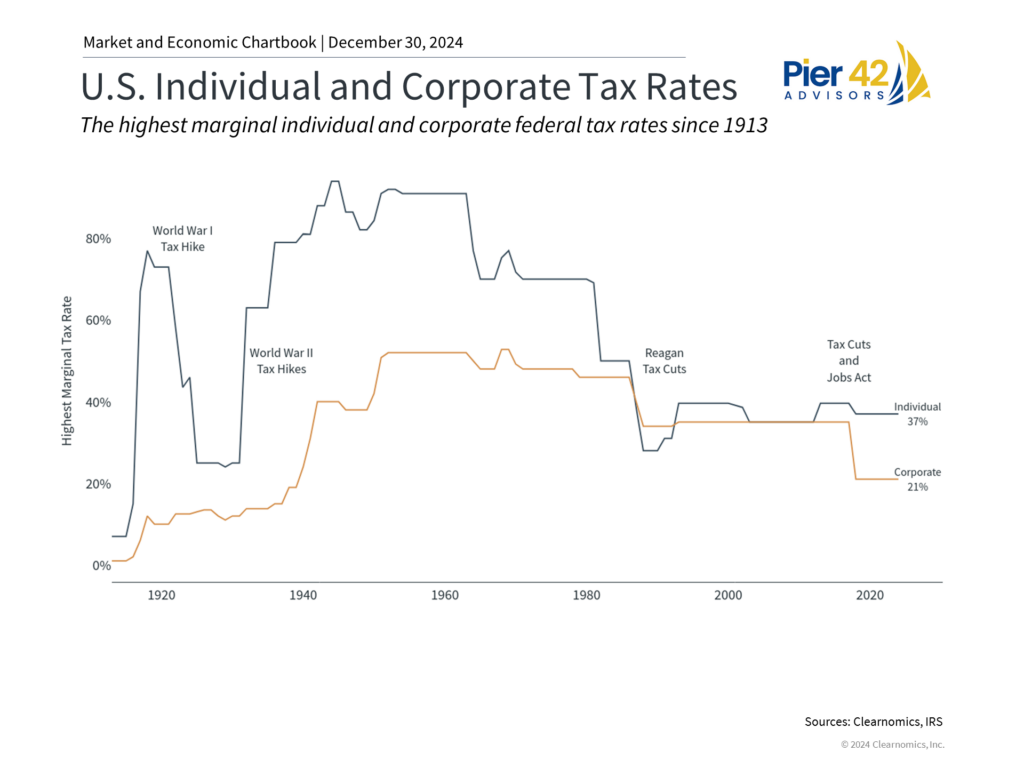
While politics often grab headlines, history shows that investments can grow under both political parties. What matters more is the overall health of the economy. While issues like trade policies and government debt are important, they shouldn’t be the main focus of your investment strategy.
5. Taking a long-term view is essential
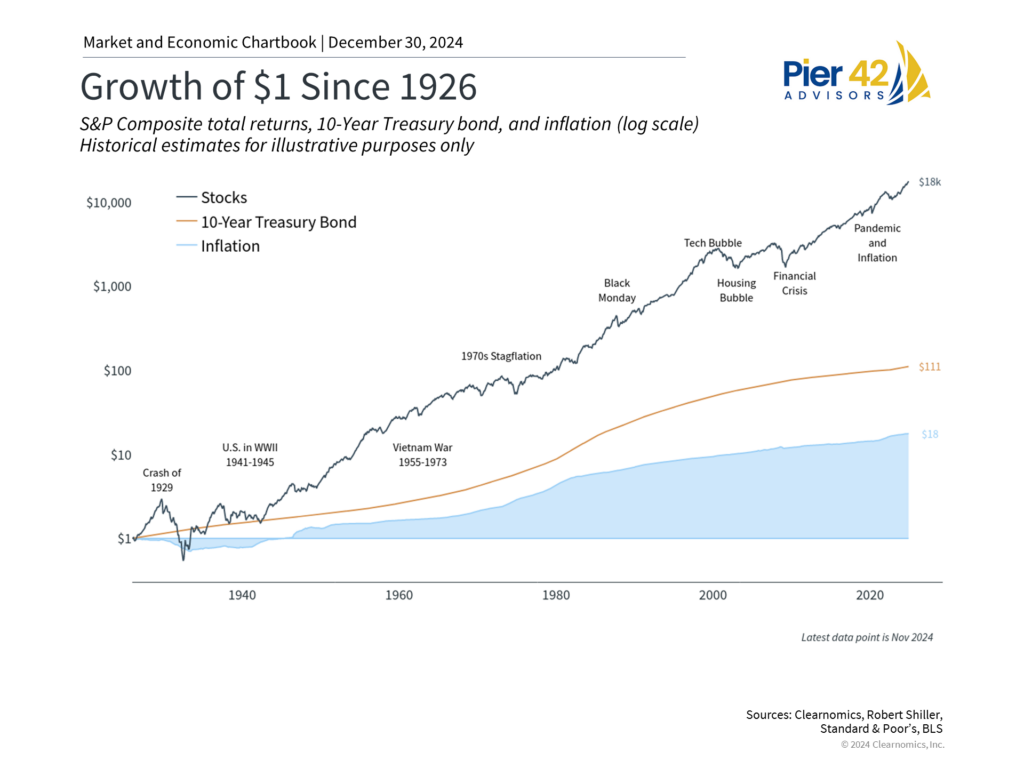
The most important lesson from 2024 is that markets can do well despite widespread concerns. Short-term market drops shouldn’t derail your long-term investment plan.
The bottom line? After a strong 2024, investors should focus on building balanced portfolios for 2025. History shows this approach helps manage unexpected events while working toward long-term financial goals.
Copyright (c) 2024 Clearnomics, Inc. All rights reserved. The information contained herein has been obtained from sources believed to be reliable, but is not necessarily complete and its accuracy cannot be guaranteed. No representation or warranty, express or implied, is made as to the fairness, accuracy, completeness, or correctness of the information and opinions contained herein. The views and the other information provided are subject to change without notice. All reports posted on or via www.clearnomics.com or any affiliated websites, applications, or services are issued without regard to the specific investment objectives, financial situation, or particular needs of any specific recipient and are not to be construed as a solicitation or an offer to buy or sell any securities or related financial instruments. Past performance is not necessarily a guide to future results. Company fundamentals and earnings may be mentioned occasionally, but should not be construed as a recommendation to buy, sell, or hold the company’s stock. Predictions, forecasts, and estimates for any and all markets should not be construed as recommendations to buy, sell, or hold any security–including mutual funds, futures contracts, and exchange traded funds, or any similar instruments. The text, images, and other materials contained or displayed in this report are proprietary to Clearnomics, Inc. and constitute valuable intellectual property. All unauthorized reproduction or other use of material from Clearnomics, Inc. shall be deemed willful infringement(s) of this copyright and other proprietary and intellectual property rights, including but not limited to, rights of privacy. Clearnomics, Inc. expressly reserves all rights in connection with its intellectual property, including without limitation the right to block the transfer of its products and services and/or to track usage thereof, through electronic tracking technology, and all other lawful means, now known or hereafter devised. Clearnomics, Inc. reserves the right, without further notice, to pursue to the fullest extent allowed by the law any and all criminal and civil remedies for the violation of its rights.


